Early 20th Century Industrial Logos 1950s Industrial Design Art
What nosotros think of as logo design—unproblematic, iconic images that represent individual brands—is frequently considered a modernistic miracle. But humans take been identifying and differentiating themselves using emblems and signature marks for hundreds, fifty-fifty thousands of years. In fact, much of the symbolic blueprint work throughout recorded history is all about communicating identity visually.
The history of logos goes back to ancient family crests, hieroglyphs and symbolism. Early versions of logos developed in the Middle Ages (around 1300 Advertizement), as shops and pubs used signage to represent what they did. The start modern logo designs were created in the early 1900s, evolving alongside mass printing.
Read on for a quick guided bout through the history of logo pattern, that will highlight the historical connections, and help anyone hoping to design a logo to create something more than powerful and constructive.
Ancient foundations of symbolism in graphic arts
—
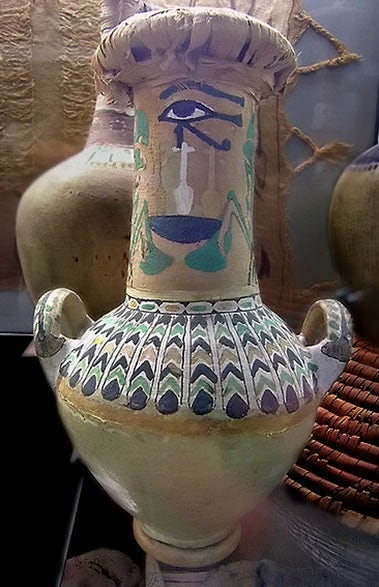
Between 70,000 BC and 7000 BC, primitive peoples from all over the earth laid the foundations of the graphic arts by painting animals in caves. Around 8000 BC, people in Assyria, Egypt, Carthage, Persia, Media and Sumer created pottery that communicated aesthetic, ethical, cultural, socio-political and religious information.
Even in these distant, primitive stretches of history, people and cultures were representing themselves and their ideas with symbols and illustrations. Nowhere was that more apparent than in Ancient Egypt, starting around the fourth millennium BC. Not only did the Egyptians develop hieroglyphics, a formal writing system, where images represented words or sounds, but they were also prolific artists. Their paintings and sculpture included specific symbolic images and colors that held specific meanings.

Betwixt 2125 and 1991 BC, grids appeared in Egyptian designs. This evolution is essential to logo design, because it ensures that artists effectively maintain proportions and ratios—and guarantees a uniform reproduction of the same design.
Non to say that the Egyptians had a monopoly on using images symbolically. During the same timeframe, the roots of calligraphy in the form of characters developed in People's republic of china. Here each word or idea had its ain symbol, and this foundation influenced after languages, even those that were less visual (like English language).
Logo's illiterate legacy
—
Jumping frontward in time, and looking to medieval Europe, nosotros run across 2 distinct visual languages appear: heraldic crests and symbolic signage.
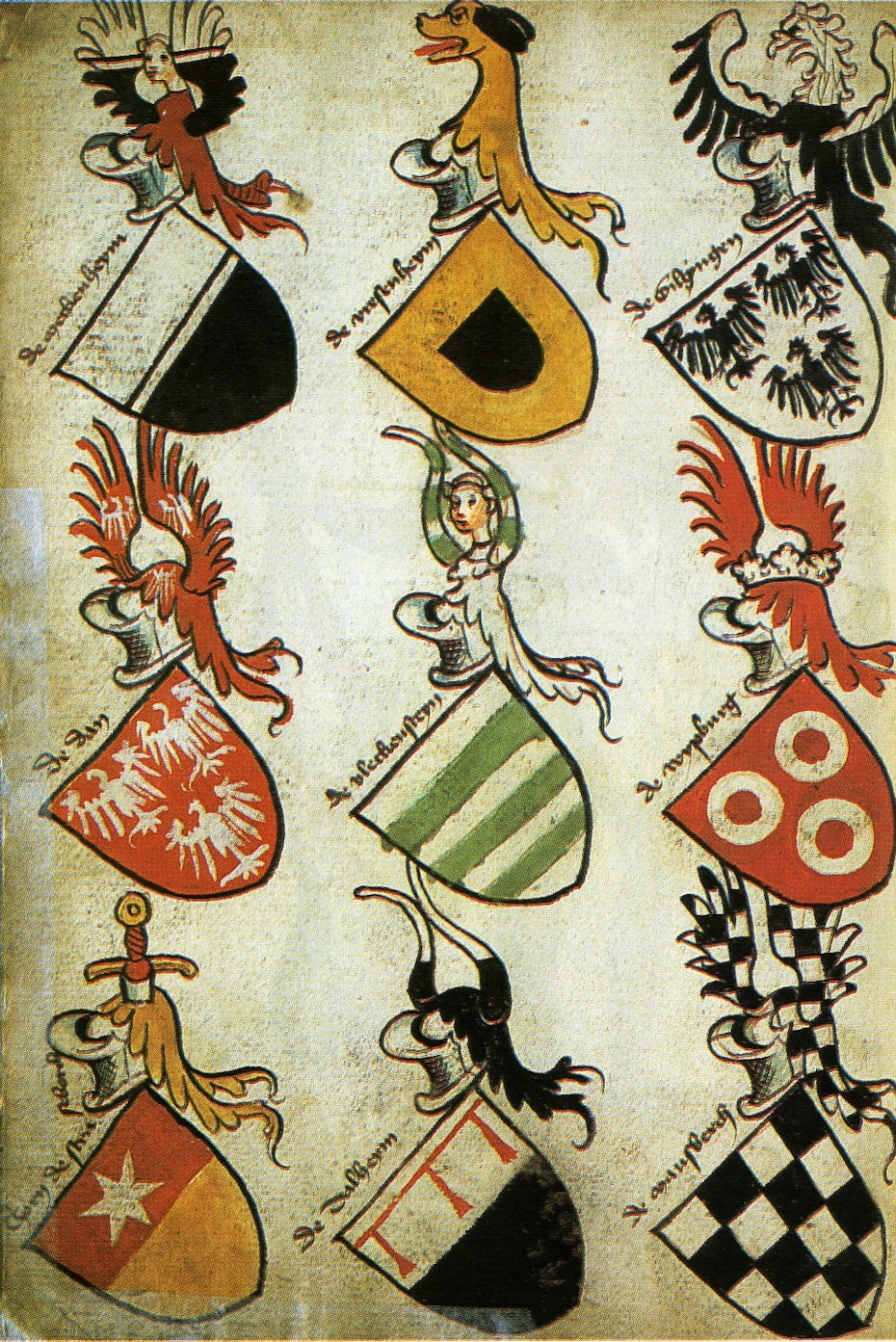
Heraldry is a organisation of assigning design elements societal meaning and condition. A sure set of colors and shapes would represent a certain noble family. This set of imagery was combined to create a unique coat of arms. Sound familiar?
Though the original purpose was a trivial unlike—identifying the friendly vs. enemy ground forces while at state of war—the result was the aforementioned. Design elements took on significant and helped people identify their favorite "brands."
Exterior of the aristocracy, most of the population was illiterate. In the High Heart Ages (900 – 1300 AD), the population started to grow, leading more than and more people to move to cities. Society moved away from self-sustaining agrestal ways of life to more specialized and diversified trade. This meant more commodification as people couldn't make everything they needed. Shops started hanging up signs to identify what goods or services they provided—think striped barber shop poles and crosses representing pharmacies.
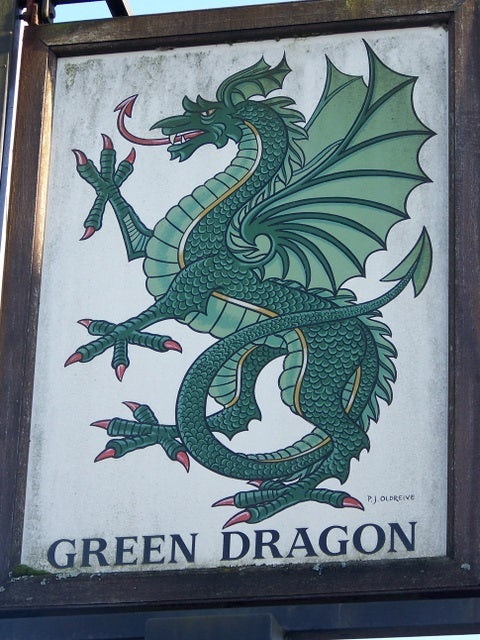
In 1389, King Richard Two of England passed a police requiring establishments that brewed beer to hang a sign indicating what they did (or adventure having their ale confiscated). (This was actually a safe measure since drinking h2o wasn't ever proficient at the fourth dimension.) This led to businesses differentiating themselves past adding heraldic images to their signs. One pub would become The Light-green Dragon, another the Two Cocks. And these images turned to names, allowing patrons to develop a sense of make loyalty to their favorite brewer.
While the images themselves weren't as specific every bit nosotros see with electric current logos (every bit in, a green dragon was a green dragon even if it wasn't replicated exactly the aforementioned each time), you can see how history is progressing…
Paper and cloth technologies further fuel evolution of logos
—
Past 105 AD a paper making industry had begun in Cathay. It extended into Japan by virtually 610 Ad. By dissimilarity, it was not until about 1276 AD that paper was showtime made in Italy after being imported by Arab traders into Europe. It was somewhen made in England in virtually 1495 Advertising.
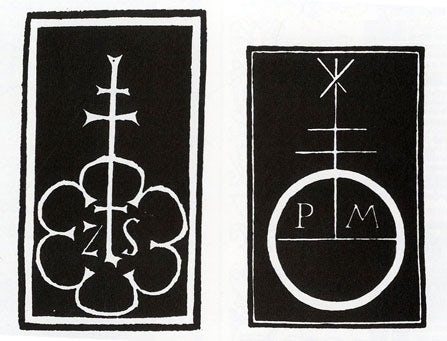
Johannes Gutenberg invented the printing press in 1440, which acquired the product of printed materials to become far more common, setting the stage for modern logo design every bit authors and printers of materials sought to claim buying of their work.
By the late 15th century, various printers were using logos to identify their works.
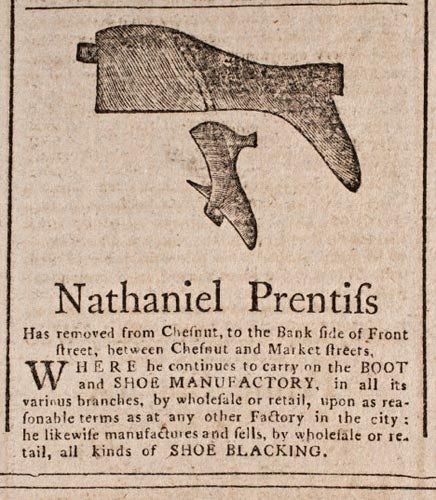
With printing comes more printed works. In the mid 1600s we saw the commencement printed newspaper with regular circulation. These quickly grew in popularity. And y'all know what funds newspapers? Advertisements. Impress gave businesses new reasons to set themselves apart from their contest; they didn't want to pay to advertise any one-time cobbler, they wanted to advertise their cobbling shop.
Industrialization + advertising = early branding
—
When thinking of the industrial revolution, the kickoff thing that comes to mind for almost people is steam engines, huge factories and cotton wool gins. But this wasn't the simply kind of technology that improved in the nineteenth century.

During the 1800s, mass production of printed materials was enabled by changes in the construction of the press press and its new steam-powered pattern. Chromolithography—which allowed colour press in mass for the first fourth dimension ever—came to the The states in 1840, and colorful printed labels, advertisements and posters became a common sight.
Also with the Industrial Revolution came the eye class. For the commencement time people who weren't in the upper echelons of society had disposable income. This lead to an increase in retail and urban centers. Naturally, as businesses established themselves and grew, branding evolved.
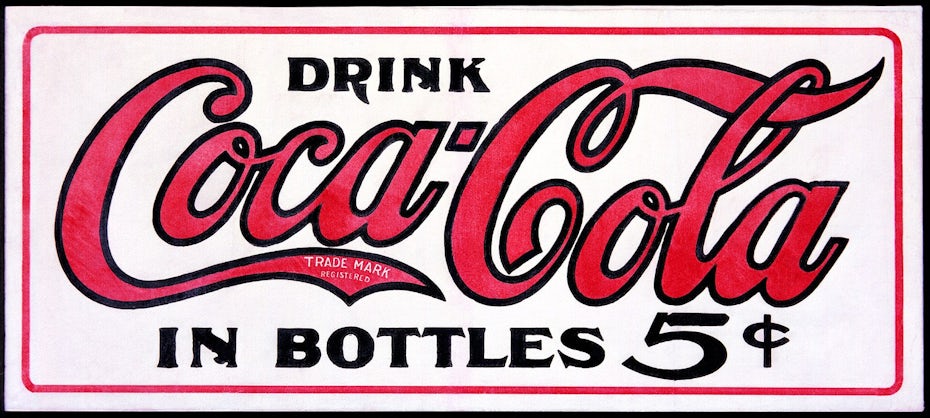
Frank Stonemason Robinson designed the Coca-Cola logo in 1885, starting the modern era of logo pattern. Simply as thirsty commuters today look for a Starbucks logo, effectually the turn of the century, people coming to and from piece of work or but out on the town could look for a Coca-Cola logo and stop for a drink. Coca-Cola'southward logo remains amidst the nearly recognized brands in the world.
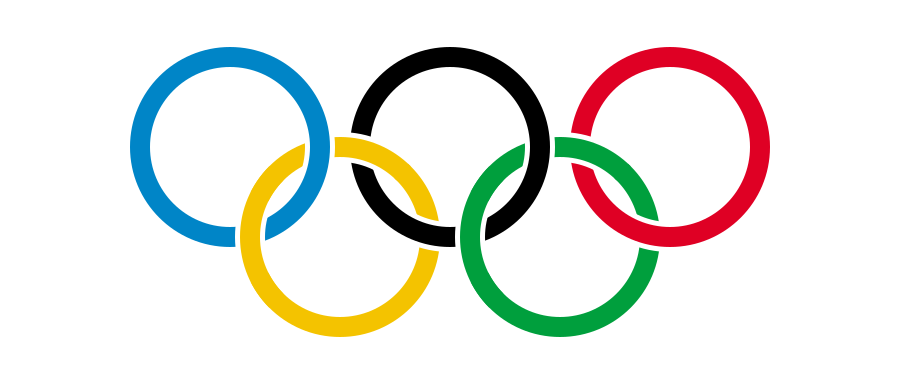
Between 1910 and 1913, commercial logos became a common sight in the Us and in Europe. In 1914, logos stretched past the commercial marketplace when Pierre de Coubertin designed the Olympic flag. This return to the roots of the logo—which predate near forms of commerce, but went back to tribal identification and cultural advice—highlighted the fact that logos are not mere commercial marks, merely take deeper cultural significance. For a new generation of consumers, this may have been one of the offset times they found themselves thinking well-nigh logos in this communal way.
An era of artistic, thoughtful logo design begins
—
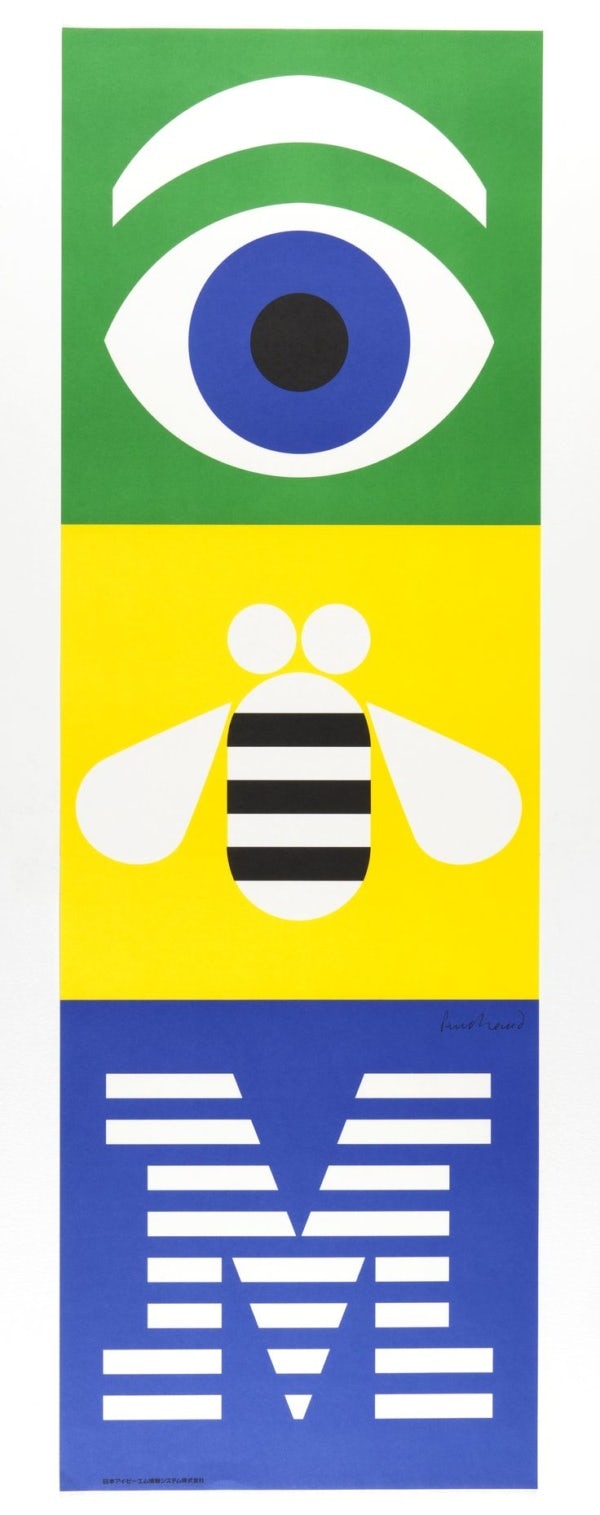
In 1956, Paul Rand designed the iconic, pictographic IBM logo featuring a human eye and a bee. Almost logo historians see this as a turning point in the history of logo blueprint.
Whether it was one iconic image or a larger trend, the 1950s marked a paradigm shift in thought surrounding logos. As companies realized how impactful symbols could be, people began to movement away from simply creating utilitarian logos for identification purposes, and began to put a corking bargain of thought into intentionally branding their businesses.
In the early 1960s, diverse thought leaders on the London graphic design and art director scene, riding this wave of thoughtful logo design, decided to collaborate to improve the entire field of design more generally. In 1962, they founded D&AD, Pattern and Art Direction. The organization stated every bit its intent the promotion of excellence in advertizing and blueprint. Between 1962 and 1964, Charles Csuri and A. Michael Noll created some of the kickoff estimator fine art, signaling the coming changes in logo design.
1977 was a banner yr for logo blueprint as Milton Glaser designed the classic I heart NY pictogram for a marketing entrada for the New York Country Department of Commerce.
Also during this year, the Us National Highway Traffic Prophylactic Administration (NHTSA) designed and trademarked the Star of Life logo, the six-pointed bluish star with the Rod of Asclepius imposed over it. (Otherwise known every bit the logo y'all see on every ambulance or other European monetary system vehicle.)
In the later one-half of the 20th century a logo became a must for businesses. If you wanted customers to call up you, you had to have one, and it had to be unique, uncomplicated and clean.
The digital era brings stylization and adaptability
—
In the 1970s, calculator-generated imagery (CGI) and calculator-aided drawing (CAD) technologies were developed. In the 1990s we saw the popularization of the personal figurer. And in the early 2000s, Adobe developed InDesign and Photoshop, bringing sophisticated digital graphic pattern tools to the masses.
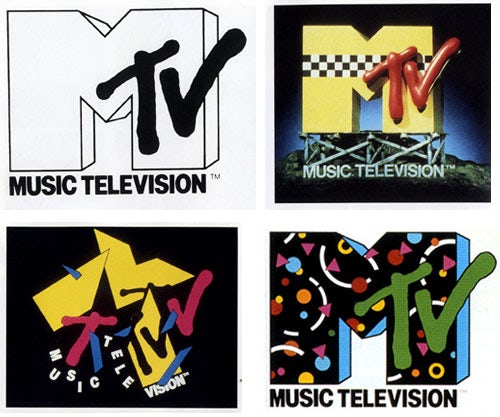
Society began to change with the digital era; people began to eat more and more of their media on screens. Designers and brands began to become creative with their logos. For example, in the 1980s, MTV came along and took a basic logo and fabricated it constantly change. This dynamism that defined the brand. Every bit the logo was blithe, blew up, crumbled, and otherwise kept changing, information technology reinforced the alternative, edgy MTV brand bulletin. Before digital screens, this manipulation wouldn't have been possible.
In the early days of the internet, designers tried to help people adapt to the new engineering science past making things on screen look like things off screen. This style is known equally skeuomorphism. It manifested itself in gradients, drop shadows, and faux wood and metallic textures meant to bring depth.

The early 2000s saw a slight change with the rise of Spider web two.0. While this term broadly refers to a shift in how websites were developed and the technologies they used, it also became a visual movement. The Web 2.0 logo became ubiquitous: rounded letters, vivid colors and multiple gradients (usually with a clearly delineated line through the heart of the wordmark).
As the world became more comfortable with digital technologies, it was no longer necessary to mimic a 3D infinite in a 2D globe. Enter: flat design.
Minimalism and flat design, at get-go blush, might announced to be a backward step in pattern. The elements of these styles dropped stylistic characters like shadows, textures and gradients that seem to make text and other graphics "lift" abroad from a computer screen or printed page. Simply what minimalist logos and flat logo blueprint really achieve is a crisper, cleaner, more than modernistic experience, and a minimal distraction to the substance of what'southward existence communicated.
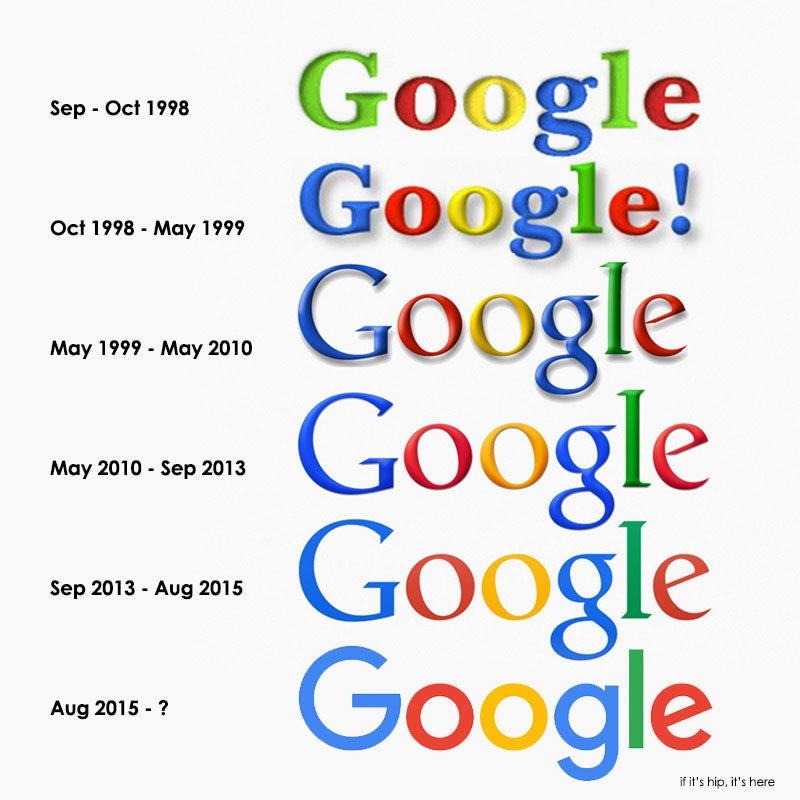
And now, apartment design is on its way out.
What the 2010s have taught us is that brands need to encompass adaptability in their logos. Gone are the days of one version of a logo living for twenty-thirty+ years. Even major brands have embraced the fact that to stay electric current, they need to regularly update their logos.
Annotation this doesn't mean performing a consummate overhaul, but rather making subtle stylistic changes to your logo to proceed it current.
A brief history of logos concluded
—

Looking at the vast, winding history of logo pattern is fascinating and useful considering it allows us to see what is informing our blueprint ideas now; however organic they may experience to usa, they are steeped in the meaning of our culture and past.
I of the most exciting things well-nigh the history of logo design is that, despite its deep roots and extensive chronology, so much remains open up to interpretation—and information technology continues to unfold before our optics. Our power to represent ourselves and things that matter to us symbolically will generate endless additional innovative iterations of our fascinating shared civilisation and history every bit nosotros create new symbols and signs.
Want to larn more about logo pattern? Check out our commodity on how to pattern a logo.
Ready to add your ain piece to the logo design history?
A logo design contest tin can get you dozens of ideas from designers around the world.
—
This article was co-written by Kelly Morr.
Source: https://99designs.com/blog/design-history-movements/the-history-of-logos/
0 Response to "Early 20th Century Industrial Logos 1950s Industrial Design Art"
إرسال تعليق